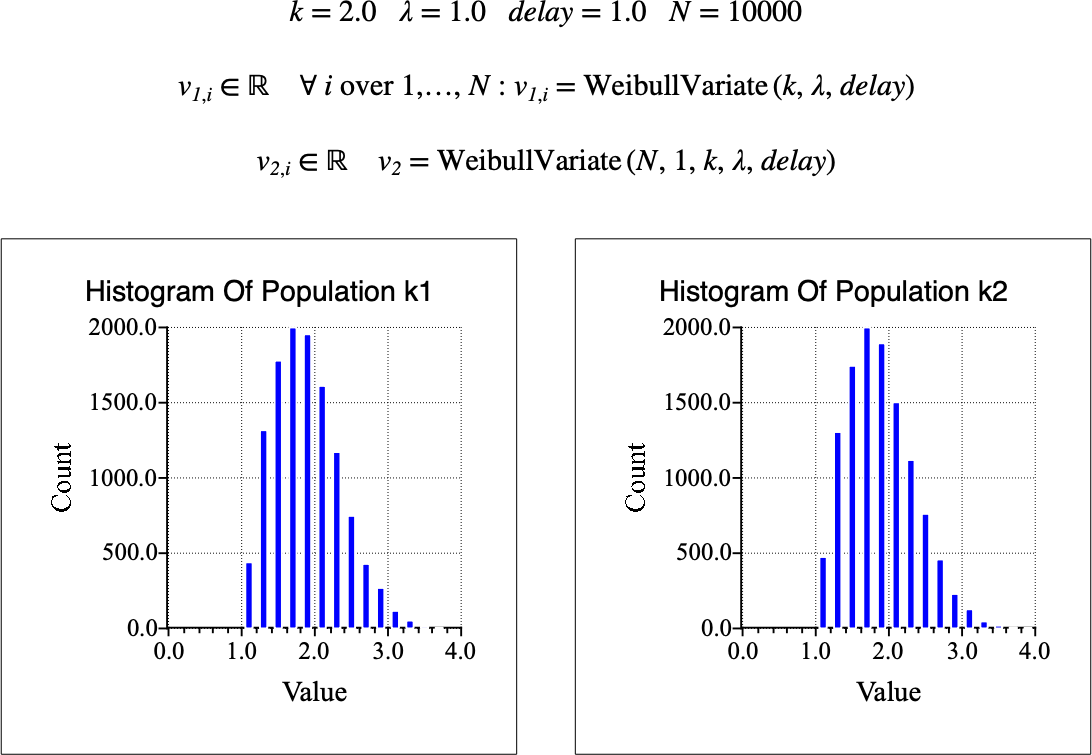\(\text{WeibullVariate}\)¶
You can use the \(\text{WeibullVariate}\) function to calculate one or more random variates in a Weibull distribution.
You can use the \weibullv backslash command to insert this function.
The following variants of this function are available:
\(\text{real } \text{WeibullVariate} \left ( \text{<k>}, \text{<}\lambda\text{>} \right )\)
\(\text{real } \text{WeibullVariate} \left ( \text{<k>}, \text{<}\lambda\text{>}, \text{<delay>} \right )\)
\(\text{real matrix } \text{WeibullVariate} \left ( \text{<number rows>}, \text{<number columns>}, \text{<k>}, \text{<}\lambda\text{>} \right )\)
\(\text{real matrix } \text{WeibullVariate} \left ( \text{<number rows>}, \text{<number columns>}, \text{<k>}, \text{<}\lambda\text{>}, \text{<delay>} \right )\)
Where \(\text{<k>}\), and \(\text{<}\lambda\text{>}\) are scalar values
representing the value of interest, the shape term, and the scale term
respectively. The \(\text{<delay>}\) term is optional and adds a delay to
the calculates variates. The \(\text{WeibullVariate}\) function is defined
over the range \(k > 0\) and \(\lambda > 0\) and will generate an error,
return NaN or a matrix of NaN for values for which the function is not
defined.
The one and two parameter versions return a single value. The three and four parameter versions return a real matrix with dimensions determined by the \(\text{<number rows>}\) and \(\text{<number columns>}\) parameters.
The \(\text{WeibullVariate}\) function calculates random variates by transformation method using:
Where \(u\) is a random variate in a uniform distribution over the range (0, 1]. The matrix version uses SIMD instructions to improve performance.
Figure 222 shows the basic use of the \(\text{WeibullVariate}\) function.

Figure 222 Example Use Of the WeibullVariate Function¶
